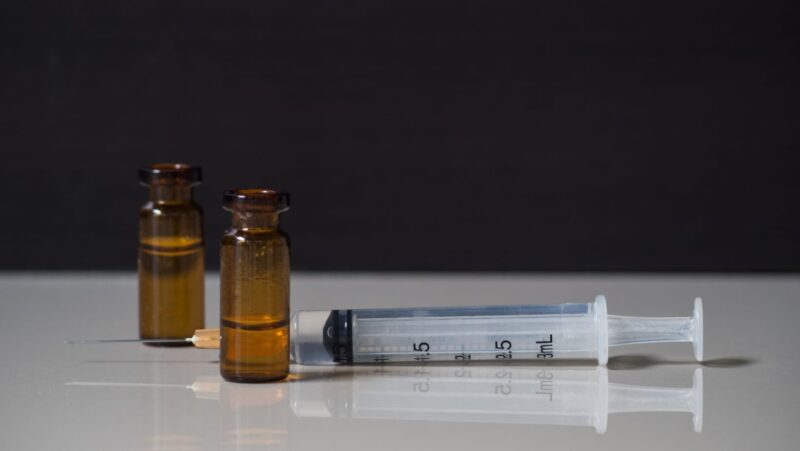
While drugs like cocaine, heroin, and methamphetamines often steal the spotlight in discussions of addiction and health hazards, inhalants represent a silent but insidious threat.
Often perceived as harmless or less dangerous than other substances, largely because many are easily accessible and found in common household products, inhalants can cause immediate harm and lead to severe long-term consequences.
This article delves into inhalants, uncovering their deceptive ubiquity in households and the severe health risks they pose when misused.
What Are Inhalants?
Inhalants are volatile substances that, when inhaled, can produce mind-altering effects. Their easy availability and the misconception of being ‘safe’ since they are present in everyday household or commercial products make them a hidden menace, especially among younger populations. A deeper dive into the types of inhalants reveals the expansive range of products that can be misused for recreational purposes.
- Solvents
Solvents are liquid chemicals used to dissolve or dilute other substances. Commonly available in homes or workplaces, these products can often be accessed without suspicion.
Paint thinners, for instance, are used in diluting oil-based paints, but they can cause intoxication when misused. Nail polish removers, often acetone-based, can give a quick high when inhaled directly. Degreasers, used to remove grease, can be equally harmful when inhaled. Additionally, gasoline contains hydrocarbons, which, when inhaled, depress the central nervous system.
The misuse of these solvents not only risks immediate harm but can also result in long-term health consequences.
- Aerosol Sprays
Aerosols are substances stored under pressure in a container and released as a fine spray when the valve is depressed. Their misuse potential lies in the propellant, which often consists of volatile hydrocarbons.
Beyond spray paints, which are commonly abused for their quick euphoric effect, personal care products like hair sprays and deodorants can be used for similar purposes. Similarly, household items like fabric protector sprays can be potent when inhaled directly. Aerosol misuse can lead to severe respiratory and cardiovascular complications.
- Gases
Gases for recreational inhalation are often sourced from products meant for other purposes. Butane lighters and propane tanks, for example, contain compressed gases that can be inhaled. The misuse of these gases can lead to sudden sniffing death syndrome, even among first-time users.
Medical anesthetics, such as nitrous oxide or ‘laughing gas,’ might seem harmless due to their medical use but can cause oxygen deprivation when misused recreationally. Moreover, party-goers might be familiar with small cartridges of nitrous oxide, commonly referred to as ‘whippets,’ which pose their own set of risks.
- Nitrites
Different from the other inhalants, nitrites act primarily as vasodilators, expanding and relaxing blood vessels. They don’t typically induce a high but rather a sensation of heat and dizziness.
Commonly marketed as room deodorizers, leather cleaners, or liquid aromas, nitrites have also been used recreationally for the perceived enhancement of sexual experiences. However, misuse can lead to methemoglobinemia, a condition where the blood’s ability to carry oxygen is dramatically reduced.
Understanding these categories and the breadth of products they encompass underscores the importance of education and awareness around the dangers of inhalant misuse. For more information and resources on the topic, visit https://westcoastrecoverycenters.com/ and other reputable sources.
Immediate Effects
Inhalants, despite being commonly available in most households, can have powerful and detrimental effects on the user almost immediately upon inhalation. These immediate effects stem from the inhalant’s rapid absorption into the bloodstream through the lungs, quickly reaching the brain and other vital organs.
The specific reactions vary depending on the type of inhalant, the amount, and the duration of use, but there are some common symptoms that users exhibit:
- Euphoria Or Feeling High
Much like alcohol, inhalants exert a depressive effect on the central nervous system. When these volatile compounds enter the bloodstream and make their way to the brain, they interfere with its regular functions. This interference results in feelings of euphoria or an elevated mood.
While this sensation of pleasure might seem attractive to some, it’s essential to recognize it as a clear sign of the brain’s normal processes being disrupted. Over time, consistent use can diminish the brain’s natural ability to produce feelings of well-being, leading to increased dependence on the substance.
- Dizziness Or Lightheadedness
The brain relies heavily on oxygen to function efficiently. Inhalants, however, can displace oxygen in the lungs, leading to reduced oxygen supply to the brain. This deficit can result in feelings of dizziness, lightheadedness, and, in extreme cases, fainting. Continued exposure only exacerbates these symptoms, making them more frequent and severe.
- Slurred Speech And Impaired Coordination
Inhalants can particularly affect the brain regions responsible for speech production and motor coordination. When these toxins interfere with neural pathways, individuals may exhibit symptoms like slurred speech, finding it difficult to communicate clearly.
Additionally, they might experience challenges with coordination, leading to stumbling, unsteady movements, and an overall lack of physical agility.
- Hallucinations And Delusions
Inhalants can dramatically alter one’s state of mind. Disturbing the balance of neurotransmitters they can lead to perceptual distortions. Users may experience visual or auditory hallucinations, seeing or hearing things that aren’t present.
Moreover, the disturbance in cognitive function might result in delusional beliefs, where the individual might be convinced of things that aren’t based in reality.
- Vomiting
Inhalants, once introduced into the bloodstream, don’t just affect the brain. They can also irritate the stomach lining, causing discomfort. This irritation can manifest as nausea and, in more pronounced cases, lead to vomiting as the body attempts to rid itself of the toxic substance.
- Coughing, Wheezing, And Shortness Of Breath
Inhalants pose a significant threat to the respiratory system. Directly inhaling these substances can cause inflammation within the respiratory tract. This inflammation can result in symptoms like persistent coughing, wheezing sounds when breathing, and noticeable shortness of breath, making even basic respiratory functions challenging

- Palpitations
The heart and broader cardiovascular system are also vulnerable to the effects of inhalants. By stimulating the release of adrenaline, these substances can cause a sudden spike in heart rate, known as tachycardia. Some users may also experience palpitations or irregular heart rhythms, which can be unsettling and, in prolonged cases, harmful.
- Impaired Judgment
The act of decision-making, a sophisticated process, is largely overseen by the brain’s prefrontal cortex. Inhalants can cloud this region’s functionality, leading to decisions that are poorly thought out, an increase in impulsive actions, and a higher likelihood of engaging in risky behaviors.
- Unconsciousness Or Severe Respiratory Depression
Arguably, the most concerning effect of inhalants is their profound ability to depress the central nervous system. In cases of significant exposure or consumption, they can severely inhibit the brain’s signals that regulate breathing.
This suppression can lead to conditions like respiratory depression, where breathing becomes dangerously shallow or stops altogether, unconsciousness, and, in extreme situations, death. It’s crucial to understand these risks and approach these substances with caution, if at all.
Inhalants, often mistaken for harmless due to their ubiquity in households and workplaces, carry severe risks, especially when misused. Educating oneself and the community, especially younger individuals, about these dangers is of paramount importance for safeguarding public health.
Long-Term Effects
The allure of inhalants for some might be their seemingly ephemeral effects; however, the true danger lurks in their prolonged use. What might appear as a short-lived high can cast a long shadow of irreversible damage over the user’s health. Here’s a more detailed look at these long-term repercussions:
- Brain Damage
The brain, the epicenter of human thought and action, thrives on a steady supply of oxygen. When inhalants enter the picture, they can significantly reduce this vital supply, leading to widespread cellular damage within the brain.
Over time, this cellular damage can translate to discernible issues. Cognitive deficits may arise when individuals struggle with tasks that were once routine. Memory gaps, a reduced ability to recall events or information, can create daily challenges.
Furthermore, mood disorders resulting from this damage can strain interpersonal relationships, thereby diminishing the overall quality of life and mental well-being.
- Damage To The Nervous System
The nervous system, consisting of intricate nerve networks, facilitates communication within our body. Inhalants introduce toxins that can erode the myelin sheaths, protective layers surrounding nerve fibers.
As this protective layer deteriorates, nerve transmissions face disruptions. Such interruptions can lead to muscle spasms, involuntary shaking or tremors, and sensations of numbness or pins and needles throughout the body, impacting daily functionality and comfort.
- Respiratory Complications
Inhalants directly target the respiratory system, and with repeated exposure, the lungs suffer significant repercussions. Chronic use can lead to lasting inflammation, scar tissue formation, and a loss of elasticity within lung tissues.
As this damage accumulates, it paves the path for respiratory diseases such as chronic bronchitis. Over time, diminished lung capacity can make everyday activities, like walking or ascending stairs, immensely taxing.
- Liver And Kidney Damage
Both the liver and kidneys play pivotal roles in detoxifying the body filtering out harmful substances from the bloodstream. The onslaught of toxins from consistent inhalant use can overburden these organs, leading to potential tissue damage.
As their function gets compromised, the body’s capacity to purify blood diminishes, putting one’s overall health in jeopardy.
- Hearing Loss
Hearing, a sense many take for granted, is vulnerable to the effects of certain inhalants, especially those containing chemicals like toluene and naphthalene. These chemicals, with sustained exposure, can damage the inner ear’s intricate structures.
This damage can manifest in various ways, from struggles with discerning certain sound frequencies to severe hearing loss or complete deafness.
- Bone Marrow Damage
Bone marrow, a soft tissue nestled within bones, is crucial for producing red and white blood cells. Some inhalants introduce chemicals harmful to bone marrow, disrupting its vital cell-producing functions.

This interference can lead to conditions such as anemia, which affects the blood’s oxygen-carrying capacity, impacting energy levels and overall vitality.
- Addictive Behaviors And Withdrawal Symptoms
While many associate addiction primarily with substances like drugs or alcohol, inhalants can also lead to strong dependencies. With prolonged use, the brain may become reliant on these substances, altering its chemical composition in response.
Such dependency can lead to intense substance cravings, a heightened tolerance requiring more frequent or larger doses for the same effects, and harrowing withdrawal symptoms when trying to quit. This cycle can trap individuals in a relentless grip of addiction.
- Risk Of Fatal Injury
Inhalants compromise cognitive and motor functions, leading to impaired judgment, slowed reflexes, and reduced coordination. This combination becomes a breeding ground for accidents, from car crashes to household mishaps.
Additionally, the confluence of inhalants with other substances, legal or illegal, can result in unpredictable and sometimes lethal outcomes. The risks are manifold, underscoring the dire consequences of inhalant misuse.
Inhalant use, whether sporadic or chronic, is not a harmless endeavor. While the immediate effects can be fleeting, the long-term consequences are profound, impacting nearly every organ system. Awareness of these ramifications is the first step in mitigating the risks associated with inhalants.
The Bottom Line
Inhalants pose a silent but substantial danger to society. Despite their common presence in households and workplaces, their potential for misuse and the consequent immediate and long-term effects should be cause for serious concern.
From the mind-altering highs to the deeply damaging effects on vital organs, inhalants are far from the harmless substances many perceive them to be. The spectrum of their impact, from cognitive and sensory disruptions to potentially fatal respiratory depression, underscores the urgent need for comprehensive awareness campaigns.
It is imperative to dispel myths, provide accurate information, and foster environments that prioritize prevention and early intervention. Only by equipping individuals with knowledge and resources can we hope to stem the tide of inhalant misuse and protect future generations from its insidious grip.












